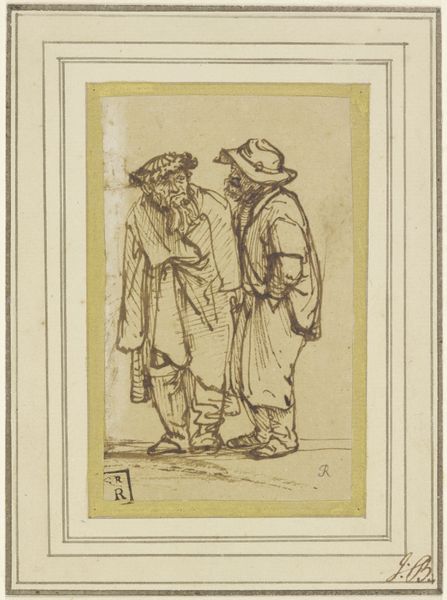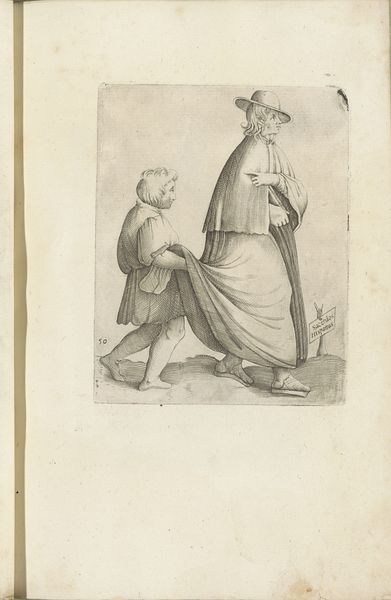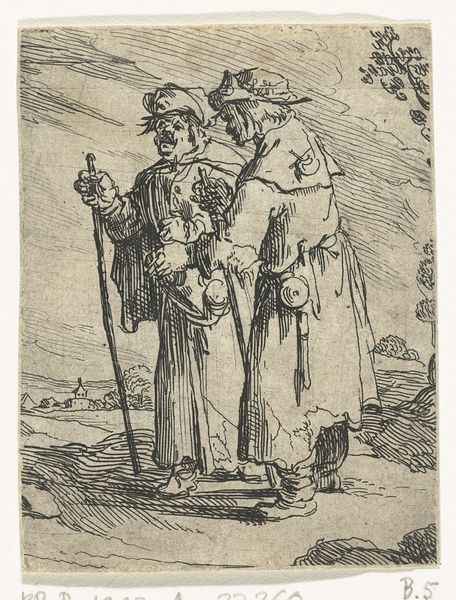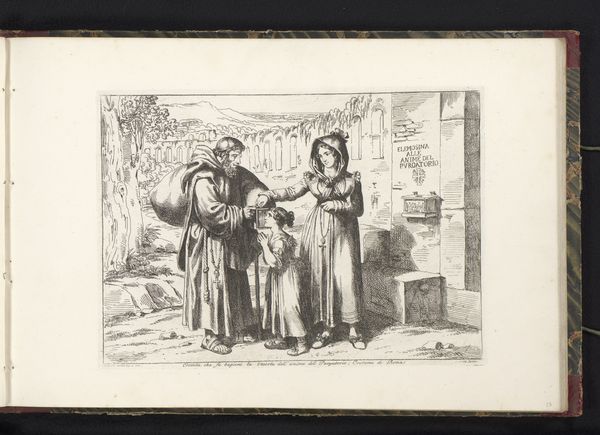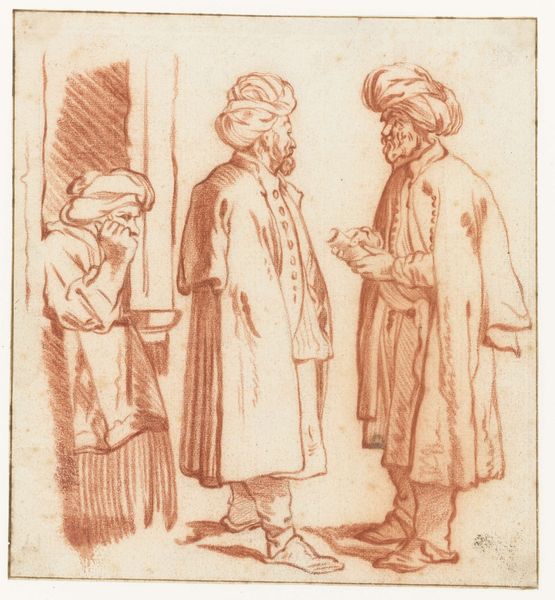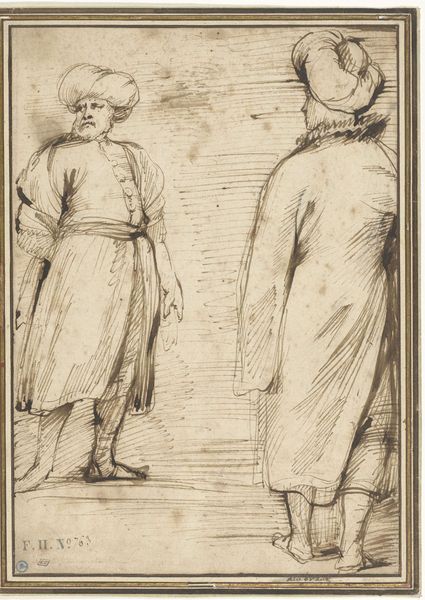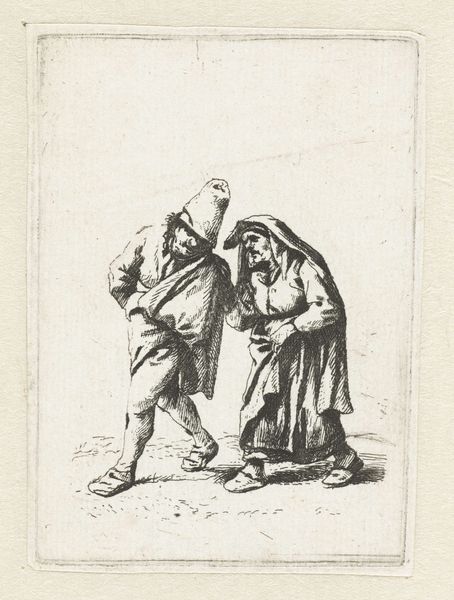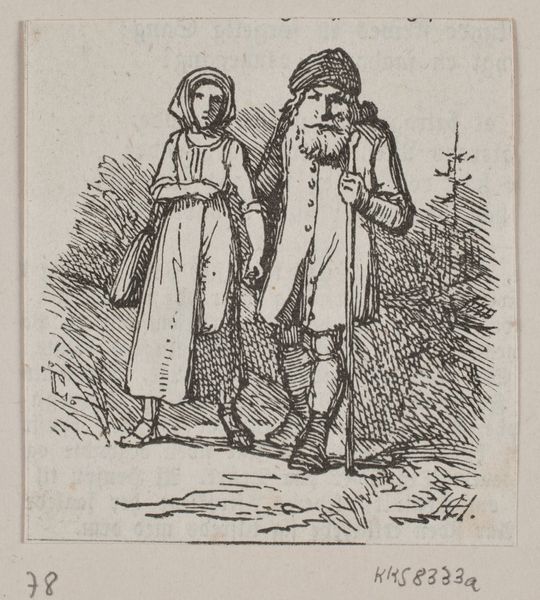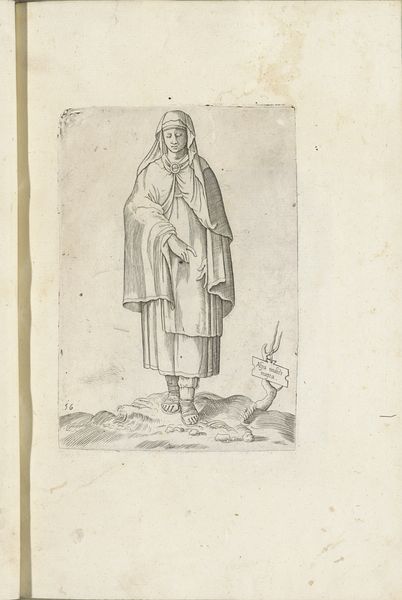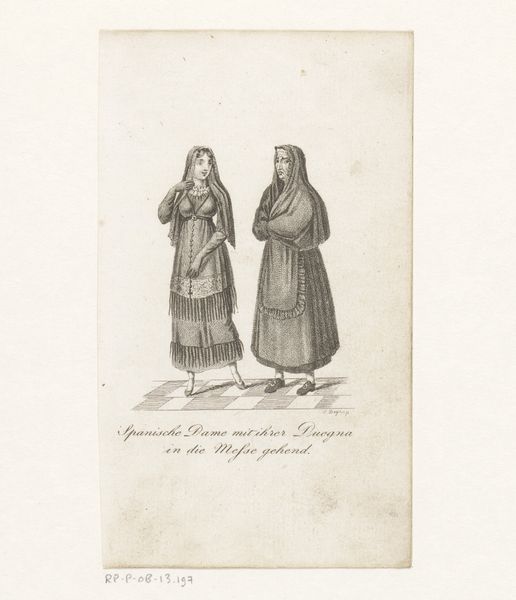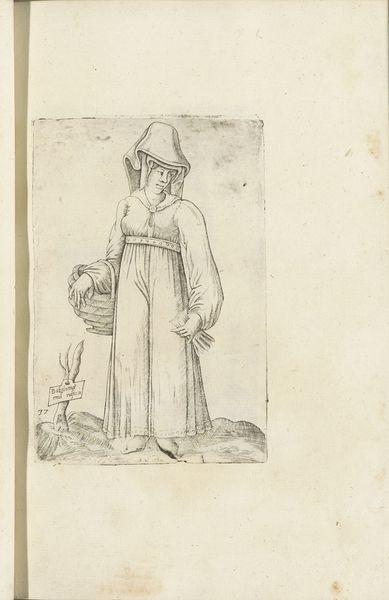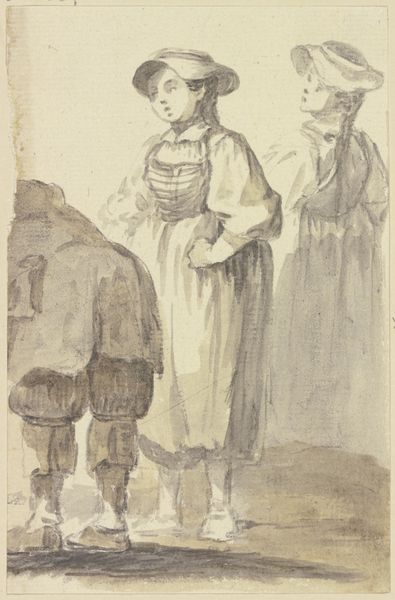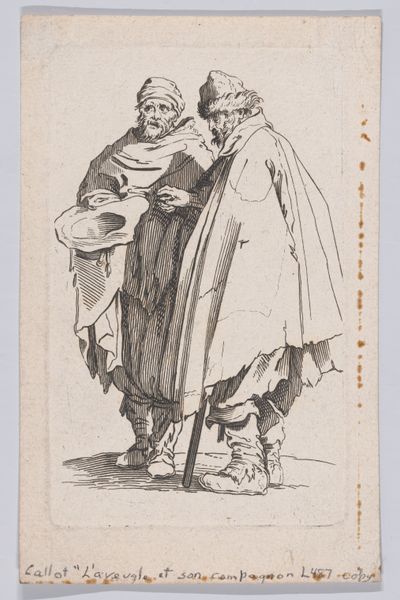
print, photography
#
portrait
# print
#
photography
#
genre-painting
#
realism
Dimensions: height 106 mm, width 63 mm
Copyright: Rijks Museum: Open Domain
Curator: This rather somber image is entitled “Souvenir de la Tombola,” a photographic print made by Prosper Morren sometime between 1869 and 1894. The phrase translates to 'A Raffle Souvenir,' and depicts an older impoverished couple standing next to each other. Editor: Yes, a heavy air hangs over the composition. It's the simplicity of the figures, their stillness and how little of the image is shaded or in strong contrast. There is great care in the detailing, the ragged edge of their worn cloths is evident. Curator: These photo prints were typically made as carte-de-visite and they circulated in society in a manner similar to how postcards are popular today, but this falls into the Realism movement with its unvarnished look at social conditions. The text at the top of the image—"Blind, poor, unfortunate, we extend our hand to our brothers, so that their heart understands our vows and takes pity on our misery!"— drives home the sympathy. Editor: The artist really understands line here and uses it expertly to convey volume with little tonal contrast. Note, for example, the etched lines around the eyes of the figures which denote age and pain, with so little shading overall it highlights those particular elements of suffering on the faces. Curator: That the photo-print includes an inscription referring to a raffle and emphasizing charity reveals that popular fundraising initiatives became deeply intertwined with image dissemination and the cultivation of empathy within broader society during this era. Editor: It's remarkable how the minimal shading makes the faces appear almost gaunt and sorrowful. Notice, the background is effectively nothing, putting full emphasis on these two figures in their plight. Curator: The figures in "Souvenir de la Tombola" aren’t necessarily portraits, but generalized representations. Their very lack of individuality serves to underscore the wider social issue that the photographer intended to critique by documenting and publishing imagery depicting the conditions of people during this period. Editor: Ultimately, what I find compelling about this work is its capacity to do so much with relatively very little in the way of contrasting lines, tones, and hues. It's a lesson in visual efficiency. Curator: Indeed, Prosper Morren’s print really sheds light on how the genre of photography enabled societal commentary. The work reveals both, photographic distribution tactics during this era as well as cultural sentiments concerning those existing on society’s margins.
Comments
No comments
Be the first to comment and join the conversation on the ultimate creative platform.
